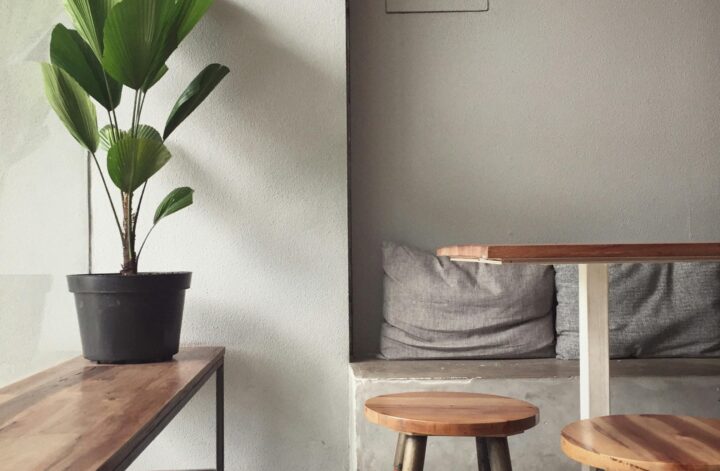In a world filled with constant stimuli and material excess, the concept of minimalist living offers a refreshing antidote. Minimalism is more than just a design aesthetic—it’s a lifestyle choice that promotes simplicity, mindfulness, and intentional living. If you’ve ever felt overwhelmed by clutter or longed for a sense of calm and clarity in your surroundings, embracing minimalist principles could be the key to transforming your home and your life. In this blog post, we explore the art of minimalist living and how it can bring a sense of peace and harmony to your everyday environment.
1. Defining Minimalism: Less is More
At its core, minimalism is about stripping away the unnecessary to focus on what truly matters. It’s about letting go of excess stuff, whether physical possessions, mental clutter, or commitments that no longer serve us. By simplifying our lives, we create space—both physically and mentally—for what brings us joy, fulfillment, and a sense of purpose.
2. Embracing the KonMari Method: Sparking Joy in Your Home
Made famous by organizing consultant Marie Kondo, the KonMari Method encourages us to declutter our homes by asking a simple question: “Does it spark joy?” When sorting through belongings, whether clothes, books, or sentimental items, hold each item in your hands and consider the emotions it evokes. If it brings joy and adds value to your life, keep it. If not, thank it for its service and let it go.
3. The Power of Decluttering: Creating Space for Calm
Clutter can be a source of stress and anxiety, as it overwhelms our senses and creates mental noise. By decluttering our homes, we create a physical environment that promotes peace and tranquility. Start small by tackling one area at a time—whether it’s a cluttered closet, a messy kitchen drawer, or a crowded bookshelf. As you remove the excess, you’ll find that you breathe easier and feel a sense of lightness.
4. Mindful Consumption: Choosing Quality Over Quantity
In a consumer-driven society, we’re often bombarded with messages of more, more, more. Minimalism encourages us to shift our focus from quantity to quality. Instead of buying cheap, disposable items that clutter our homes, invest in well-made, timeless pieces that bring lasting value. By being mindful of our purchases, we reduce waste and cultivate a sense of appreciation for the things we own.
5. Creating Functional Spaces: Designing with Purpose
Minimalist design is not just about aesthetics—it’s about creating spaces that serve a purpose and enhance our daily lives. When organizing your home, consider the functionality of each area. Choose furniture and decor that are both beautiful and practical, with clean lines and uncluttered surfaces. A minimalist space is a blank canvas for living, where every item has its place and contributes to a sense of calm.
6. Digital Decluttering: Streamlining Your Digital Life
In our digital age, clutter can extend beyond the physical realm to our digital devices. Take time to declutter your digital life by organizing files, deleting unused apps, and unsubscribing from email lists that no longer serve you. Simplify your digital workspace to reduce distractions and create a more focused, productive environment.
7. Practicing Mindfulness: Cultivating a Present-Moment Awareness
Minimalist living is not just about the stuff—it’s also about cultivating a mindset of mindfulness and presence. By slowing down and savoring the present moment, we can fully appreciate the beauty and simplicity of life. Practice mindfulness in your daily routines, whether it’s sipping a cup of tea, going for a mindful walk, or simply taking a moment to breathe and be.
8. Letting Go of Guilt: Embracing Imperfection and Self-Compassion
As you embark on your minimalist journey, remember that it’s okay to let go of things that no longer serve you. Release the guilt associated with sentimental items or gifts that no longer bring joy. Minimalism is about making intentional choices that align with your values and priorities. Be kind to yourself throughout the process, and celebrate the progress you make, no matter how small.
9. The Joy of Less: Finding Freedom in Simplicity
As you simplify your life and create a clutter-free environment, you may find that less truly is more. With fewer distractions and obligations, you have the freedom to focus on what truly matters to you—whether it’s spending time with loved ones, pursuing your passions, or simply enjoying moments of quiet reflection. Minimalist living is about finding joy in the simplicity of life’s everyday moments.
10. Living with Intention: Creating a Life Aligned with Your Values
Ultimately, minimalist living is a deeply personal journey that invites you to live with intention and purpose. It’s about consciously choosing how you want to spend your time, energy, and resources. As you declutter your physical space and clear mental clutter, you create room for the things that truly matter to you. Whether it’s cultivating meaningful relationships, pursuing your passions, or exploring new experiences, minimalist living empowers you to design a life that reflects your values and brings you true fulfillment.
Conclusion: Transforming Clutter into Calm
From cluttered chaos to serene simplicity, the art of minimalist living offers a path to greater peace, clarity, and fulfillment. By decluttering our physical spaces, simplifying our possessions, and cultivating mindfulness in our daily lives, we create room for calm and creativity to flourish. Whether you’re just beginning your minimalist journey or seeking to deepen your practice, remember that each step toward simplicity is a step toward greater freedom and authenticity.
So take a deep breath, envision the life you want to create, and let go of what no longer serves you. Embrace the beauty of less, and discover the profound sense of calm and contentment that comes from living with intention and purpose.




